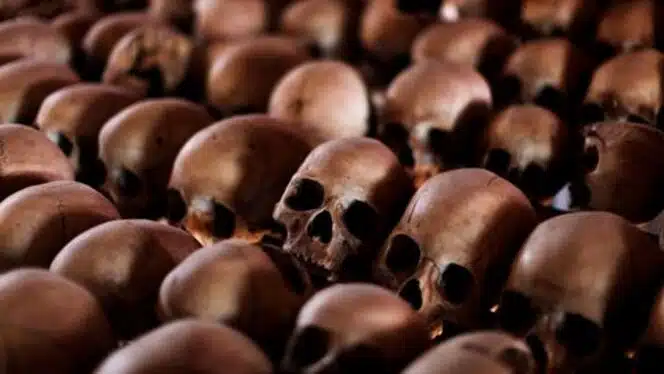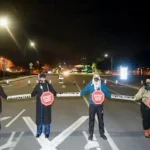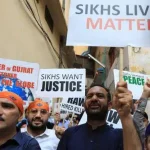Hundreds of community initiatives supported by the government or civic associations aim to bring Rwandans together, and the country comes together in solemn remembrance of the anniversary of the genocide.
With their hoes, the diggers scratch the brown earth in search of—and frequently discover—fragments of human bone. The others observe in somber quiet as the women then use their hands to wipe the shards of bone.
In a lush, rural area of southern Rwanda, the scene of ongoing excavation has grown all too familiar. In October, human remains discovered at the site of a house under construction prompted searchers to look for additional mass graves thought to contain victims of the 1994 genocide against Rwanda’s Tutsi population.
The bones of at least 1,000 individuals have reportedly been discovered in this farming town in the Huye region in the months afterward, according to Rwandan officials. This is a remarkably high amount considering the government’s three decades-long attempts to provide respectful graves for victims of genocide.
As Rwanda gets ready to mark the genocide’s 30th anniversary next week, the ongoing finding of mass graves serves as a sobering reminder of the difficulties the nation confronts in achieving enduring peace as well as its will to come to terms with its terrible past.
Speaking to The Associated Press, the leader of a well-known group of genocide survivors and a number of other Rwandans stated that the findings highlight the necessity for further efforts toward genuine peace.
Withholding information regarding a mass burial that was previously unknown has become illegal in Rwanda. Perpetrators of the 1994 genocide, including those who were sentenced to prison and thereafter freed, have been pushed for years to come forward and share what they know.
However, the majority of mass graves are still discovered by accident, which results in additional arrests and further traumatizes survivors.
Expanded search
Following the October finding, four of Jean Baptiste Hishamunda’s relatives were taken into custody.
Following the discovery of six human remains beneath his house, excavators began searching his whole land, unearthing dozens, then hundreds more remains as they searched other locations in Huye.
During the course of over 100 days in 1994, radical Hutu massacred an estimated 800,000 Tutsis. Targeted too were a few moderate Hutus who attempted to defend Tutsi minority members.
On April 6, a plane carrying President Juvenal Habyarimana—a member of the Hutu majority—was shot down in Kigali, the country’s capital, setting off the genocide. The president was killed in the jet crash, which was attributed to the Tutsi. Enraged, Hutu extremist gangs started murdering Tutsis with the support of the police and army.
The administration of President Paul Kagame, whose party has ruled East Africa since 1994 and whose rebel group put an end to the genocide, has made an effort to heal ethnic rifts.
In order to punish genocide and criminalize the ideology that justifies it, the government enacted a strict penal code, and Kagame has encouraged loyalty among the 14 million citizens of the nation. Ethnicity is no longer a factor in Rwandan ID cards, and the curriculum includes lessons regarding the genocide.
Bringing Rwandans Together
Hundreds of government-sponsored or civic-oriented community projects aim to bring Rwandans together, and the country comes together in solemn remembrance of the genocide anniversary each April.
In this small nation where Hutu, Tutsi, and Twa coexist, major murders motivated by ethnic hatred are rare these days. However, there are still indications of what the authorities describe as a genocidal mentality, citing the withholding of information concerning undiscovered mass graves as one example.
The executive secretary of Ibuka, a Kigali-based group of genocide survivors, Naphtal Ahishakiye, reports that there have also been instances of villagers questioning mass-grave investigators about whether they are looking for precious minerals or throwing dog corpses at memorial sites.
Ahishakiye remarked, “It’s like saying, ‘What we lost during the genocide are dogs.'”
He stated that some people are still reluctant to come forward and report what they saw. “People still need to be approached, taught, and improved upon until they are able to tell us what transpired.”
According to him, Tutsi survivors “begin to doubt” the sincerity of their Hutu neighbors when more mass graves are found. They receive no response when they beg for information about relatives who were killed.
In the village of Ngoma, where corrugated-sheet-roofed shacks dot verdant fields, diggers find bones and skulls mixed in with ripped clothes and moldy shoes. The survivors experience trauma once more.
Beata Mujawayezu, her voice breaking as she remembered her 12-year-old sister’s death at a roadblock on April 25, 1994, stated, “I have tried very hard to forget.”
The girl went down on her knees in front of a gang commander, whom she called as “my father,” and begged for her life with militiamen. A machete was used to hack her.
In her predominantly Tutsi neighborhood, Mujawayezu described her sister as a “lovely girl” while observing the excavation at a mass grave site on a recent afternoon. “Hopefully, we will find out where she was buried one day.”
The past bothers young people less. In a nation where the majority of the population is under 30, some Rwandans saw this as an opportunity for peacemaking.
SOURCE: TRTWORLD






